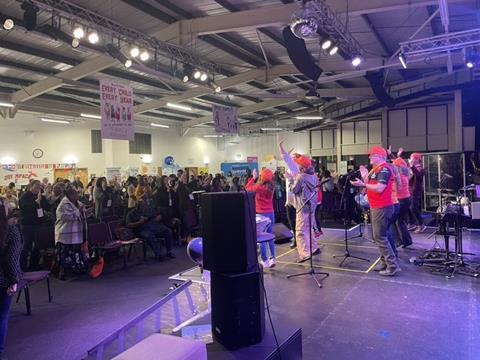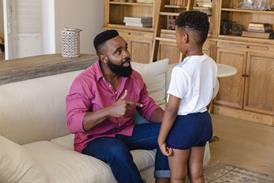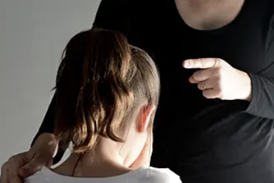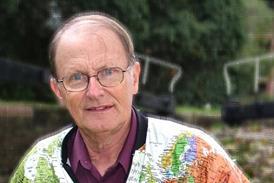Jenni Osborn visits the Hand in Hand conference and finds there’s plenty to to encourage families looking to be enthusiastic about their faith

The Hand in Hand conference this year (2024) was enjoyable, encouraging and engaging. The overall atmosphere was one of positivity and lifting each other up. I went along on the Saturday, not entirely sure what to expect, but was made very welcome, and felt really encouraged by the experience.
Here’s a quick run down of what I particularly liked:
The joy team: a big team of people who were there to spread joy throughout the day. This worked really well to keep people smiling as they moved around the building. They were particularly visible, from a red carpet welcome first thing in the morning, which was literally a red carpet along with a team of people cheering and greeting others by name (which was on their lanyards), to handing out pennies to those going into the toilets (to ‘spend a penny’), to cheering people going into different seminar rooms. It felt very unBritish in many ways, but it definitely was joyful! The team was a big one, which meant that they could be in many places all at once, included children and young people and wearing their orange t-shirts meant they were easy to spot.
The exhibition: there were a plethora of stands offering so many different resources and approaches to children’s and young people ministry. An addition to the usual was that every exhibit was given a handstamp, and the programme had space for stamps. Delegates could go round collecting stamps in their programme which meant that it was really clear which stands they had already visited and which others they could target. Those who collected the most stamps were put into a competition to win goodies. I particularly liked:
Pulse Ministries: a real plethora of resources on offer to support children and youth ministry in churches, including a relaunch of their holiday club packages www.pulseministries.org.uk
Counties Resources: an excellent set of resources which aim to connect churches with schools in their area www.lifeexpo.co.uk
Walk Through the Bible: creatively engaging children in the Bible in schools and in churches www.bible.org.uk
Maydor Makes: local small business making creative resources for engaging children with bible stories www.facebook.com/maydormakes orders taken by email maydormakes@gmail.com
The programme: lots of different people involved in running sessions, an equal number of men and women, a number of black and brown people. The seminars were all ‘streamed’ into themes and that the themes moved around which encouraged people to move too. There were two slots for ‘short sessions’ which were just 15mins long and these worked well, especially for the post-lunch short attention spans! The physical programme was well produced and gave lots of really good information to help delegates get to where they needed to go. I also liked that there were pauses built into the day.
The seminars: I went to those with a family theme and was really encouraged by the tools and resources discussed. They were mostly very well attended, with around 40-50 delegates in most of them. Parenting for Faith have an excellent 5 tools model about supporting families in church and Lauren Sheath did an excellent job on unpacking them; Imagine Ministries (www.alivefamilyworship.com) had Mum and Son duo Shell and Harvey Perris talking about their own family worship experiences; Alan Charter from the Global Children’s Forum delivered 10 missional ideas for families in 15mins; and Kristen Stephenson from the Bible Society took us through encouraging children to engage with the Bible in another 15mins session. The final seminar I went to was Nick Harris from Safe Families, also representing Home For Good, TLG and Kids Matter, who talked about supporting families who are hurting, he took us through some steps to take when coming alongside families, children or young people who are in care or social work system.
The main session: I was only able to attend one of the main sessions, on the Saturday morning, when Lucy Moore, founder of Messy Church and now heading up the Growing In Faith Foundation, was the speaker. The worship was provided by Helen Yousaf and her band, there were games led by two of the younger members of the joy team and Olly and Helen Goldenberg, the conference directors, lead the meeting. Lucy’s message about hospitality was timely and important in terms of its encouragement and the challenge brought by her question ‘Who is not at the table?’. The venue was fairly full, and there was a really joyful feeling in the room. Olly and Helen made great hosts, and because the stage was low, and the house lights stayed up, it felt more like a family or community gathering than a ‘show’.
The language: The language used in the programme and on platforms where I was present was inclusive and child centred, with particular attention to access for those with additional needs. Olly had told me that they had been really intentional about not siloing the input for children and young people with additional needs, and this meant having reflections in many of the seminar sessions from Mark Arnold and Kay Morgan-Gurr from the Additional Needs Alliance based around how to apply the principles brought up in families with additional needs children. I thought this worked well and meant that conversations about additional needs and disability were threaded through a significant proportion of the sessions.
One or two things that were challenging:
The programme: it is always difficult to manage a conference programme where there is a choice to be made. I could have gone to three different seminars in the first session but of course could only be in one – if you were there as part of a team then you can send someone into each of the seminars if needed. But no repeats on the programme meant I missed a couple I’d have liked to see, of course having a conference programme where every delegate can get to every session they want to is pretty much impossible so I completely understand!
The question: the team of organisers had clearly put a lot of thought and work into all the aspects of running a big event and they did a great job. One of my reflections on the question ‘Who is not at the table?’ is about the provision for disabled and additional needs delegates at the event. The venue was broadly an accessible venue for wheelchair users and those with mobility issues, but it was not apparent that there were many disabled delegates attending. I know this is a complex issue as not every disability is visible, so it isn’t always immediately obvious how many disabled people there are in a building. However, perhaps there could have been additional resources such as large print programmes, British Sign Language interpreters, clearly highlighted spaces for disabled people in the rooms, which may have added to the inclusive feel of the conference.
My overall verdict
The overall atmosphere was terrific. It was well attended but didn’t feel too overwhelming, the exhibition was packed, both with stands and with delegates, the bookshop was also packed each time I went passed. There was a big team of people who were there to make the conference go smoothly, they were visible and friendly. I came away feeling positive and with many ideas to take back to my church, which is always a good thing and, thanks to an emphasis on intergenerational faith in all the session I went to, I felt encouraged and supported as a parent.































